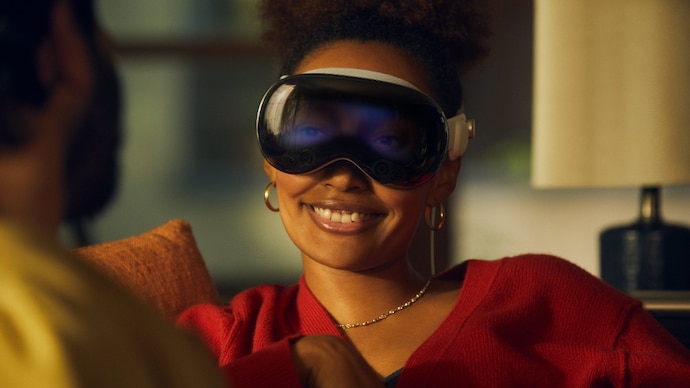Apple may use liquid lenses in Apple Vision Pro to improve people’s vision
Apple may use liquid lenses in future Vision Pro headsets to help users with vision correction needs. Liquid lenses can dynamically adjust focus based on the user’s prescription in real-time, enhancing the AR experience.
Listen to the story

Using virtual reality headsets like the Apple Vision Pro is often a hassle for people who wear glasses. Right now, people need to resort to expensive Zeiss inserts to correct their vision in order to use Apple’s VR. However, Apple could solve this problem in future versions of the Vision Pro. The tech giant has reportedly filed a new patent that could incorporate liquid lenses into the Apple Vision Pro headset. If implemented, this technology would eliminate the need for expensive corrective lens inserts, giving users a more dynamic and personalized vision experience.
A newly unveiled patent reported by Apple Insider details a sophisticated approach to vision correction that dynamically adjusts focus based on the user’s needs by leveraging liquid-filled lenses controlled by electrical currents. This system promises to address the limitations of traditional corrective lenses, which remain fixed once manufactured. However, these new liquid lenses can be adjusted to the user’s vision, even if vision changes over time. “The adjustable lenses may be fluid-filled adjustable lenses or other types of adjustable lenses. The adjustable lenses may be adjusted for a specific audience (for example, to take into account a prescription) or may be adjusted based on the viewing scenario for the user,” the patent states.
According to the report, the core of this technology lies in the unique properties of liquid lenses. Unlike traditional glass lenses, which have a fixed curvature and refractive index, liquid lenses can change their shape and focus in response to an applied electric current. When this current is applied, the liquid inside the lens changes the way it bends light, effectively adjusting the focus to match the user’s prescription needs in real time.
This dynamic capability of liquid lenses can be particularly advantageous in the context of AR. Traditional corrective lenses are typically designed for specific focal distances – such as reading or distance vision – which makes them less effective in AR environments, where users may need to focus on objects at different distances simultaneously. For example, the user may need to shift their focus from a distant virtual screen to a nearby object or text. Liquid lenses, with their ability to adapt quickly, can ensure that all elements within an AR environment are sharp and clear regardless of their distance from the user.
Additionally, liquid lenses’ technology is expected to solve a common problem faced by users of AR headsets with prescription inserts: the problem of blurry areas in their field of view. In traditional progressive lenses, the upper part is designed for distance vision while the lower part is for reading, which creates a compromise when using devices like AR headsets. Since the display in an AR headset remains at a fixed distance from the user, traditional lenses can cause unwanted blurring in certain areas of the user’s vision. However, liquid lenses can continuously adjust to provide a clear view across the entire field of vision, whether the user is looking at a distant object or something up close.
The patent also addresses another important issue: reducing power consumption. Since the lenses rely on electricity to adjust their focus, it’s important to ensure that this technology doesn’t drain the headset’s battery excessively. According to the report, Apple is likely to focus on optimizing the energy efficiency of these lenses, ensuring that users can enjoy the AR experience for longer periods of time without worrying about their device running out of power prematurely.
Interestingly, the implications of this liquid lens technology are not just limited to Apple Vision Pro. If implemented successfully, liquid lenses could also play a key role in the development of Apple Glasses, the much-hyped AR eyewear. By integrating these lenses into glasses, Apple could offer a product that automatically adapts to the user’s vision needs, eliminating the need for separate prescription lenses.





